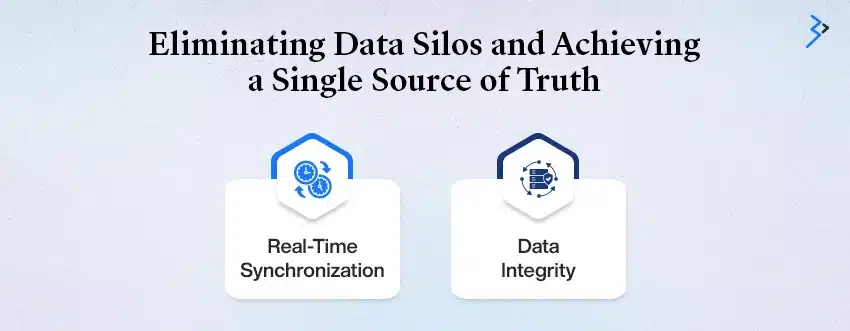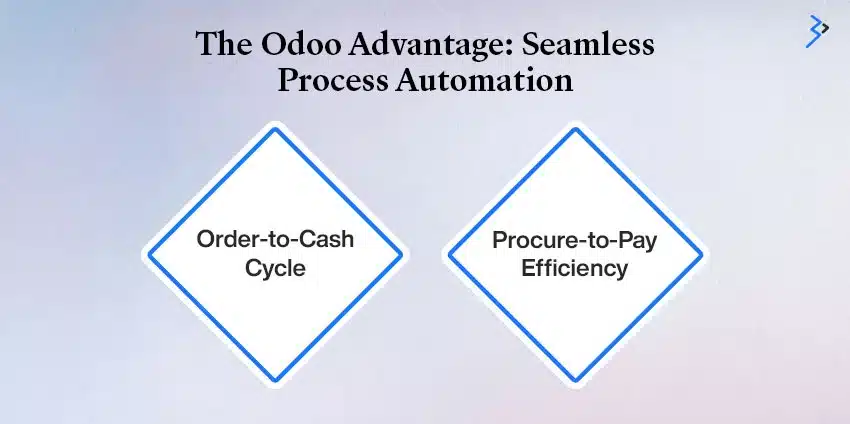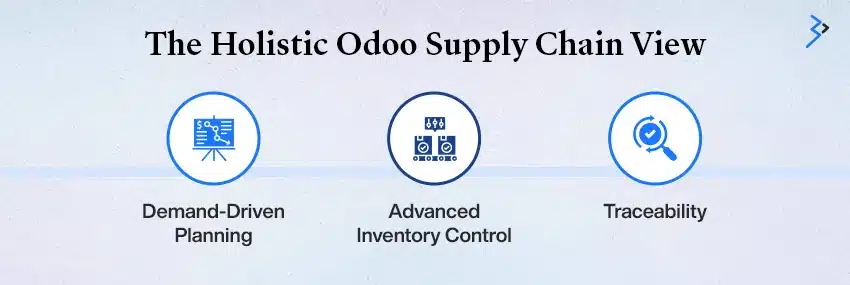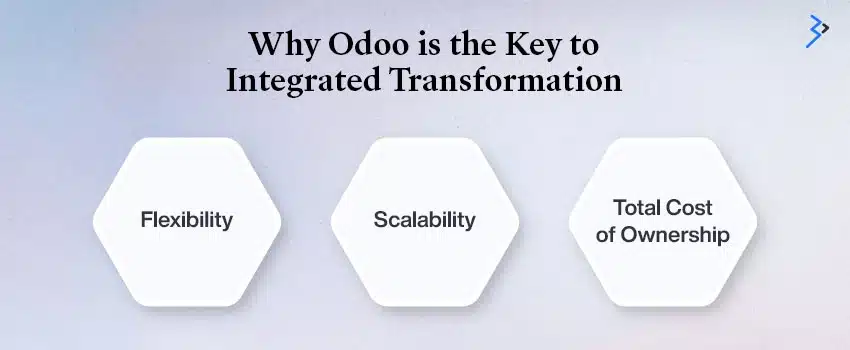In a world where every second counts, businesses run on data, but too often, that data is trapped in silos. Sales teams chase figures in one platform, finance works from another, and HR operates in its own bubble. What should be a seamless flow of information turns into a maze of disconnected systems, manual reconciliations, and frustrating inefficiencies.
The impact? Missed insights, slower decisions, and opportunities slipping through the cracks. For growing enterprises, this fragmented approach is no longer sustainable.
The solution lies in integration, bringing every department, process, and dataset together under one intelligent system. An integrated ERP (Enterprise Resource Planning) platform does exactly that. It unifies operations, eliminates duplication, and transforms scattered data into real-time, actionable intelligence.
In this article, we’ll uncover five transformative ways a fully integrated ERP system reshapes business performance and explore why Odoo’s modular, all-in-one architecture is emerging as the go-to platform for modern, data-driven enterprises.
1. Eliminating Data Silos and Achieving a Single Source of Truth

The most debilitating problem that growing enterprises face is data fragmentation. When sales records reside in one CRM, inventory levels are in a separate spreadsheet, and financials are in an isolated accounting package, reporting becomes tedious and unreliable. The “truth” about the business changes, depending on which system you examine.
The Integration Solution: Unified Data Flow
An integrated ERP system like Odoo solves this by establishing a single database shared across all functional departments. With professional Odoo ERP implementation services, businesses can optimize workflows, enhance efficiency, and achieve real-time insights across operations.
Real-Time Synchronization:
When the sales team records a sale in the CRM, the system updates inventory levels and recognizes future revenue in the accounting module. Additionally, the Manufacturing module can trigger production orders automatically, ensuring smooth operations without manual intervention.

Data Integrity:
Centralized data entry and validation significantly reduce human error, duplication, and inconsistencies. When we use verified information for reports, we enhance operational transparency and gain a competitive edge. By proactively managing customer expectations, the sales team can mitigate the impact of production delays on delivery dates.
According to Panorama Consulting Group’s 2024 ERP Report, 95% of organizations reported improvements in their operational efficiency after implementing ERP systems.
2. Streamlining End-to-End Business Processes
Traditional business processes often involve painful “handoffs” between departments. A customer order, for example, might require five separate manual steps: Sales enters the data, Operations verifies stock, Accounting approves credit, Logistics arranges shipping, and finally, a separate system sends the invoice. These handoffs are ripe for errors and delays.
The Odoo Advantage: Seamless Process Automation

Odoo’s unique, natively integrated design means its applications, from CRM Development Services and Sales to Inventory and Invoicing, are built to work together from day one. Achieving genuine end-to-end automation is now possible.
Order-to-Cash Cycle:
The system automates the entire Order-to-Cash process within a single Odoo environment. When an opportunity turns into a sales order, it automatically triggers a delivery order and updates journal entries. It generates a customer invoice, leading to faster cash flow and improved customer satisfaction.
Procure-to-Pay Efficiency:
The Procurement module links to the inventory’s minimum-stock rules and the supplier ledger in Accounting. According to an article from Procurify, systems that auto-route approvals, pre-validate budget codes, and automatically match invoices to POs can eliminate up to 60% of manual intervention.
According to a NetSuite article on ERP-procurement integration, such automation enables “tracking inventory and sending out orders when needed,” effectively reducing manual work across procurement and finance departments. Automation saves time and standardizes workflows, ensuring consistent and compliant processes.
Read More – Real-Time Logistics Optimization with Odoo ERP Solutions
3. Accelerating Decision-Making with Unified Business Intelligence (BI)
In today’s volatile markets, delayed insights can be fatal. Relying on monthly or quarterly reports generated from aggregated, stale data is no longer adequate. Leadership needs a real-time pulse on performance to adjust strategy dynamically.
Leveraging Odoo for Real-Time Analytics

An Integrated ERP System consolidates performance metrics from every corner of the business, manufacturing, sales funnels, and accounts receivable, into one central reporting layer.
Unified Dashboards:
Odoo provides dynamic, user-friendly admin dashboards that draw real-time data from all activated SAP Human Capital Management modules. A CEO can instantly see the current inventory value, the sales pipeline health, and the cash position side-by-side on one screen.
Predictive Analytics:
By connecting historical data across Sales and Inventory, the system can use advanced algorithms to forecast demand more accurately. Manufacturers can optimize their production schedules, which helps minimize excess inventory and avoid costly shortages.
According to McKinsey & Company, organizations that adopt data-driven decision-making are 23x more likely to acquire customers, 6x more likely to retain them, and 19x more likely to be profitable.
4. Optimizing the Supply Chain and Inventory Management
Manufacturing, purchasing, and inventory teams must collaborate effectively to ensure the success of organizations that manage physical goods. Miscommunication in disparate systems can lead to costly overstocking, obsolete inventory, or crippling stockouts.
The Holistic Odoo Supply Chain View

An integrated ERP eliminates the disconnects across the supply chain.
Demand-Driven Planning:
The Sales and CRM applications feed future demand directly into the Manufacturing and MRP (Material Requirements Planning) applications. Ensuring that production matches customer orders and market forecasts eliminates speculative manufacturing.
Advanced Inventory Control:
Odoo’s Inventory module tracks items across multiple locations (warehouses, retail stores, transit) and integrates seamlessly with the Purchase module. When a stock level hits a pre-defined threshold, the system can automatically generate a request for quotation (RFQ), accelerating the procurement process.
Traceability:
Industries that require strict compliance, such as food, pharmaceuticals, and aerospace, benefit from integration that provides comprehensive traceability. The process tracks batch and lot numbers from the raw material supplier to the final customer, ensuring transparency and accountability in the supply chain.
Timely material arrival reduces warehouse costs and boosts e-commerce and B2B logistics fulfillment speed.
5. Enhancing Collaboration and Employee Experience
The transformation delivered by an integrated ERP extends directly to the user experience. When employees must navigate four different interfaces, log in to three different systems, and manually transfer data, their daily work becomes frustrating and inefficient.
A Unified Platform for People
Odoo’s integrated suite extends beyond core operational functions to include essential employee-facing tools, putting it squarely into the strategic domain of SAP Human Capital Management.
Seamless Employee Experience:
Employees and managers interact with a single, intuitive interface (often leveraging the system’s Employee Self-Service, or ESS, features) for everything: logging time, submitting expense reports, requesting vacation, and checking internal communications.
Cross-Functional Collaboration:
Teams can collaborate on a single customer record or project task, with every department viewing the same notes, documents, and history. The improvements in internal communication significantly enhance teamwork and speed up the resolution of customer issues.
Reduced Training Overhead:
Training teams on one cohesive system is significantly faster and more cost-effective than training them on multiple specialized applications that may have conflicting user interfaces and terminology.
An integrated ERP directly increases employee productivity and morale by making the day-to-day job easier and providing quick access to information. A quiet yet powerful force can drive business improvement.
Read More – How Odoo ERP is Transforming Manufacturing Operations Today
Why Odoo is the Key to Integrated Transformation

Odoo stands apart from other ERP systems thanks to its modular, all-in-one design. While traditional ERPs often struggle to connect separate apps for CRM, manufacturing, and other functions, Odoo’s 70+ applications work together effortlessly. They share the same core system, database, and interface, meaning no clunky integrations or expensive middleware. Everything just works in sync.
For businesses going through digital transformation, Odoo makes it easy to manage everything in one connected platform.
- Flexibility: Start with core modules like Inventory and Accounting, and seamlessly add complex applications like eCommerce, Project Management, or Quality Control as the business scales.
- Scalability: The architecture easily handles the growth from a small team to a multinational corporation without periodic, disruptive migrations.
- Total Cost of Ownership (TCO): The unified platform significantly lowers the long-term TCO by reducing the complexity of maintenance, upgrades, and licensing fees associated with managing multiple vendor contracts.
The shift to an integrated ERP system is a modern business’s most crucial technology decision. It is the move from mere software management to proper operational management. Unifying data, automating processes, and providing real-time intelligence lay the foundation for sustained, agile growth.
Conclusion: Partnering for a Unified Future
Achieving a fully integrated, high-performing ERP environment requires more than just installing software; it demands expert strategic planning, deep functional knowledge, and precise technical execution. Moving from isolated systems to a centralized platform presents a significant challenge that organizations must not underestimate.
At Brainvire, we specialize in guiding large enterprises through this exact transformation. As an Odoo Gold Partner, our team’s authoritative expertise in Odoo’s architecture enables us to customize, integrate, and deploy a solution that not only streamlines your operations but fundamentally redesigns your business for efficiency and growth.
We are your trusted partner in leveraging the full, transformative power of an integrated ERP system, ensuring your technology investment translates directly into a lasting competitive advantage.
FAQs:-
An Integrated ERP System connects all business functions, sales, finance, HR, and operations on one platform. It eliminates data silos, automates workflows, and ensures everyone works from a single source of truth, leading to faster and more accurate decisions.
Odoo offers 70+ natively integrated apps built on one database and interface. Its modular, scalable design lets businesses start small and expand easily, without complex integrations or high licensing costs, making it perfect for sustainable digital growth.
With real-time analytics and unified dashboards, an integrated ERP gives leaders instant access to company-wide insights. According to McKinsey, data-driven firms are 23x more likely to acquire customers and 6x more likely to retain them, a clear edge in competitive markets.
Integrating your system with your ERP (Enterprise Resource Planning) software boosts efficiency and cuts costs mainly through automation and centralized data. It enables systems to exchange data automatically, cutting manual processing time and reducing errors. Eliminating repetitive work frees your team for strategic activities. This centralization provides real-time visibility, leading to faster, smarter decisions and lower operating costs.
Brainvire combines strategic planning with deep Odoo expertise and an Odoo Gold Partnership to deliver seamless ERP integration. From customization to scaling, our team ensures your ERP investment drives real efficiency, agility, and growth across the organization.
Related Articles
-
Meet Odoo 19: Ushering in the Next Era of Enterprise Excellence
The pace of digital transformation is reshaping the very foundation of ERP systems. Today’s enterprises demand platforms that drive scalability, enhance agility, and deliver seamless user experiences across operations. In
-
The Ultimate Guide to Odoo Connectors for Seamless Integration
Odoo is a free and open-source enterprise resource planning (ERP) system with a modular architecture and several business apps. These apps include eCommerce, customer relationship management (CRM), accounting, manufacturing, and
-
Real-Time Logistics Optimization with Odoo ERP Solutions
Summary: Logistics optimization is the backbone of modern supply chain management. It simply refers to streamlining and fine-tuning processes to ensure goods move smoothly from point A to point B




